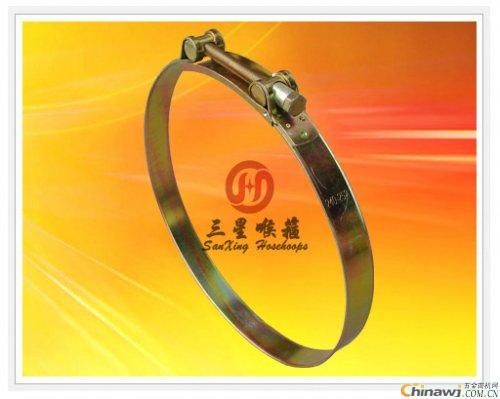1. Factors Affecting the Installation Quality of Hose Clamps:
(1) The clamp must be free from defects such as air bubbles, blisters, and shrinkage holes. Any such imperfections can compromise the structural integrity and sealing performance of the joint.
(2) The material and properties of the sealing ring must meet specified standards. The sealing surface should be smooth, without air bubbles, impurities, cracks, or unevenness. Aging or damaged rubber rings should not be used, as they may lead to leaks or failure under pressure.
(3) The movement distance of the snap ring within the clamp is theoretically half of the pipe’s expansion and contraction. However, this value must be measured accurately in practice. If the movement is insufficient, the pipeline’s expansion and contraction requirements will not be met. To ensure optimal sealing, the clamp is pre-matched with the end pipe before leaving the factory. In real-world applications, it's not advisable to replace the end pipe with a regular one. The perpendicularity of the end face relative to the pipe axis and its flatness are crucial. Non-standard dimensions can significantly reduce the joint’s expansion and contraction capability, leading to poor performance.
(4) The diameter of the end pipe should be selected with a positive tolerance. If the diameter is too small, the clamping force of the hose clamp on the sealing ring will be inadequate, which negatively affects the sealing performance of the joint.
2. Installation Precautions:
(1) It's essential to control the distance L between the snap ring and the end pipe. This should be done according to the manufacturer’s instructions. When the gap between the two pipe ends is at its minimum, the snap ring should just touch the slope to ensure proper alignment.
(2) Once the position of the snap ring is fixed, the gap size between the two pipes should be calculated based on the pipe’s elongation and the ambient temperature during installation. Careful attention must be given to dimensional accuracy during construction to avoid misalignment or poor sealing.
(3) Under a fixed movement distance, the weld height and width of the snap ring and the end pipe should be controlled. A larger perpendicularity error between the snap ring plane and the end pipe axis reduces the joint’s expansion and contraction capacity, resulting in worse performance over time.
(4) During welding, splashing debris can damage the sealing surface of the end pipe. Before installation, any welding slag or residue on the sealing area must be thoroughly removed to ensure a reliable seal.
The clamp connection, also known as a grooved connection, is a modern method for joining steel pipes. It offers numerous advantages, including ease of installation, strong sealing, and durability. According to the design specifications for sprinkler systems, the piping should be connected using grooved joints, threaded joints, or flanged connections. For pipes with a diameter of 100mm or larger, flanges or grooved joints are recommended in specific sections to ensure safety and efficiency.

Screw,Set Screw,Lag Screw,Self Tapping Screws
Jiangsu Jiajie Special Screw Co., Ltd , https://www.jiajiescrewcompany.com